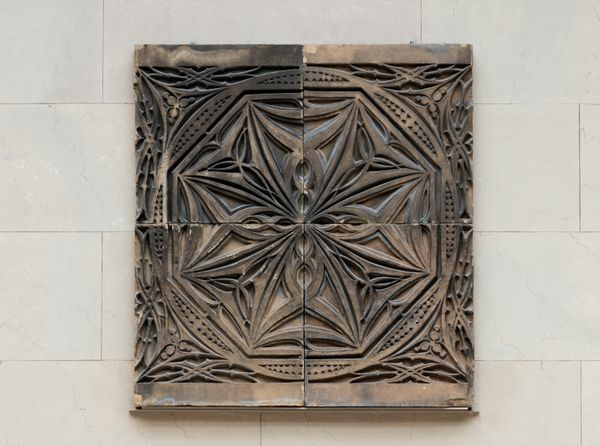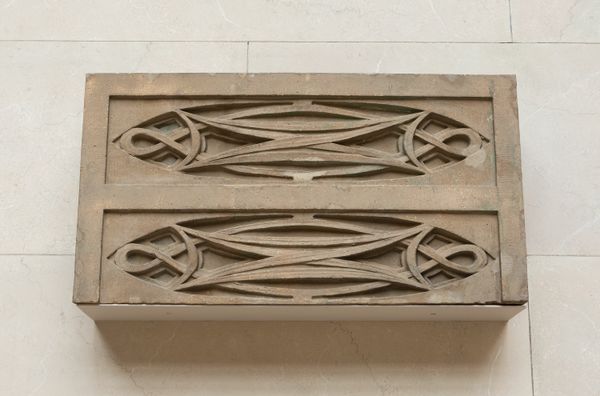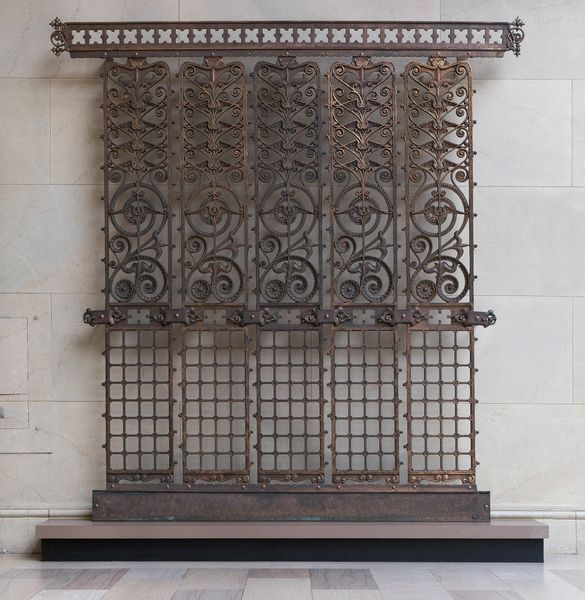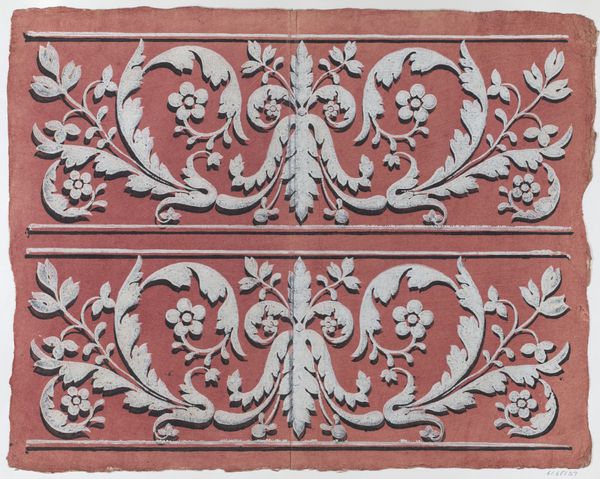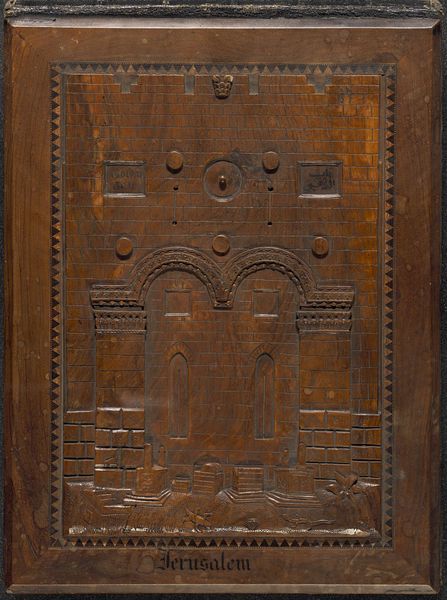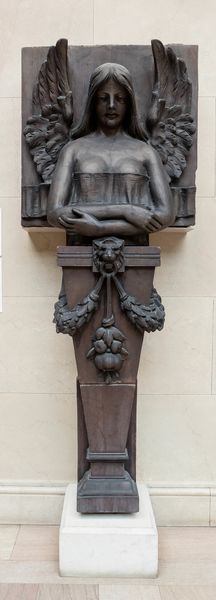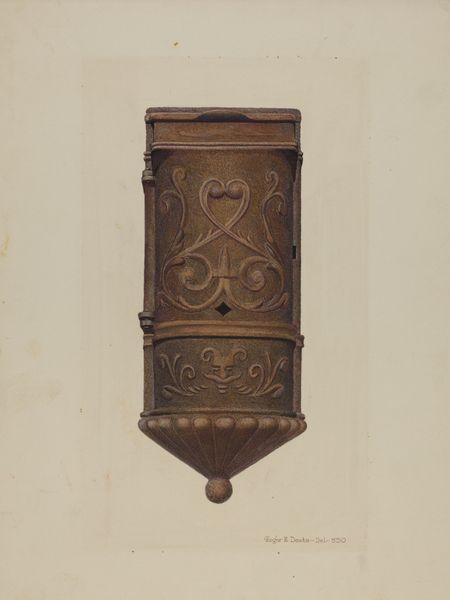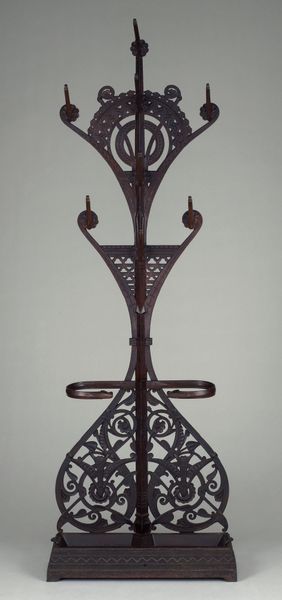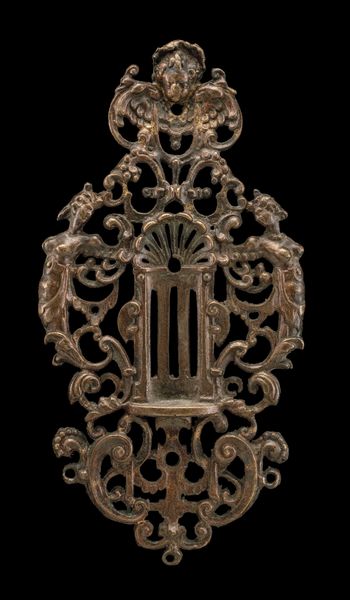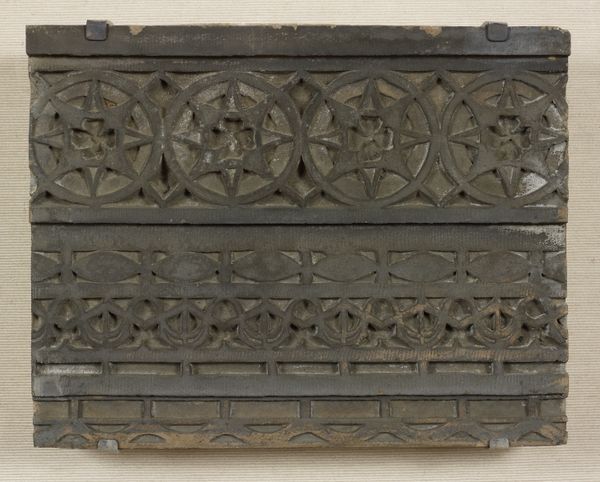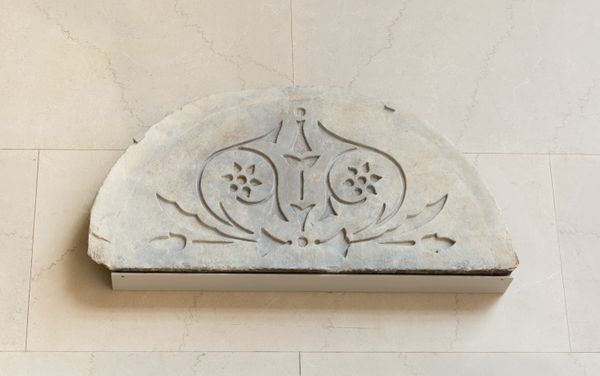
Schlesinger and Mayer Company Store, Chicago, Illinois, Baluster 1898 - 1899
0:00
0:00
metal, sculpture, architecture
#
art-nouveau
#
metal
#
sculpture
#
geometric
#
sculpture
#
arch
#
decorative-art
#
architecture
Dimensions: 89 × 25 × 5 cm (35 × 10 × 2 in.)
Copyright: Public Domain
Curator: We are looking at a baluster, a decorative supporting post, designed by Louis H. Sullivan for the Schlesinger and Mayer Company Store in Chicago, crafted between 1898 and 1899. This example of Art Nouveau is now held in the collection of the Art Institute of Chicago. Editor: Wow, there's a beautiful weight to this baluster, a silent assertion of both support and artistic will. The color of the metal speaks of industry and artistry entwined, like a dancer crafted from the raw earth. Curator: Indeed, the choice of metal is significant, linking industrial production with aesthetic innovation. Sullivan aimed to democratize beauty, integrating intricate designs into everyday architectural elements accessible to all. Consider this baluster in the context of urban development during the late 19th century. It’s more than mere decoration, it reflects broader socio-economic shifts. Editor: Absolutely, but my immediate gut reaction speaks to something else. See, I get this intense feeling, this almost gothic breath whispering of cathedral arches and ancient stories told in the shadows. Sullivan captured the sacred geometry lurking beneath the surface of commerce, or maybe the cathedral of consumerism emerging at the time. Curator: That's a fascinating point. We might view this work through the lens of consumption. What statements do you think this was attempting to make within its historical context? Consider the philosophies related to the decorative arts, craft, labor and economy, and the position of architecture at this point in history. Editor: Hmmm...well, imagine walking through that department store when it was brand new. The world felt like it was made for *you,* made to anticipate your desires! The metalwork says it will outlast you, solid, beautiful, permanent, a physical metaphor of commercial power and how deeply we invest ourselves in these institutions and, honestly, I'm seeing that power asserted now in the work itself. Curator: Precisely. It's a dialogue between past aesthetics and future aspirations, encapsulating the anxieties and ambitions of a rapidly changing society. It is this intersection, where art history meets cultural critique, that truly illuminates the depth of Sullivan's work. Editor: What is truly mind-blowing is thinking about the endless number of human interactions and experiences that piece silently witnessed in the department store over its many years. Curator: Reflecting on this piece makes me think of the cyclical patterns that repeat over time. From gothic cathedrals, consumer culture to even present-day ideologies, perhaps? Editor: Yeah. Next time I'm lost in a department store, maybe I'll find my way back to thinking about those geometries.
Comments
No comments
Be the first to comment and join the conversation on the ultimate creative platform.



